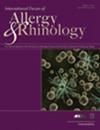The association between olfactory subdomains and frailty: A prospective case‒control study investigation
Abstract
Background
Amidst the rise of frailty among a globally aging population, olfactory decline has emerged as a harbinger of frailty and mortality in population-level studies. However, the relationships between frailty and the olfactory subdomains of identification (OI), discrimination (OD), and threshold (OT) remain unexplored. This study prospectively examined the association between olfactory subdomains and the physical frailty phenotype (PFP) to investigate olfactory evaluation as a means of frailty screening.
Methods
A case‒control study of 45 frail and 45 non-frail individuals matched by age and sex. OT, OD, OI (range 0‒16), and composite sum (threshold, discrimination, and identification scores [TDI], range 0‒48) were measured with Sniffin’ Sticks. PFP was defined by presence of three or more criteria: physical inactivity, self-reported exhaustion, muscle weakness, slow gait, and unintentional weight loss. Conditional logistic regression evaluated associations between olfactory subdomains and frailty.
Results
Ninety individuals with mean age of 83.1 ± 4.9 years, 60% female (n = 54), and 87.8% white (n = 79) were included. Olfactory scores were significantly lower in the frail group for OI (9.2 vs. 12.1, p < 0.001), OD (8.1 vs. 11.6, p < 0.001), OT (4.4 vs. 8.5, p < 0.001), and TDI (21.7 vs. 32.2, p < 0.001) than in the non-frail group. A single-point decrease in olfactory score was associated with increased odds of frailty in OT (odds ratio [OR]: 2.21, 95% confidence interval: [1.22, 3.98]), OD (OR: 2.19, 95% CI: [1.32, 3.65]), OI (OR: 2.29, 95% CI: [1.19, 4.39]), and TDI (OR: 1.54, 95% CI: [1.14, 2.08]).
Conclusion
The robust association between olfactory subdomain scores and frailty suggests that olfaction may be an accessible signifier of frailty. Future studies should investigate this relationship longitudinally to assess predictive relationships.

 求助内容:
求助内容: 应助结果提醒方式:
应助结果提醒方式:


